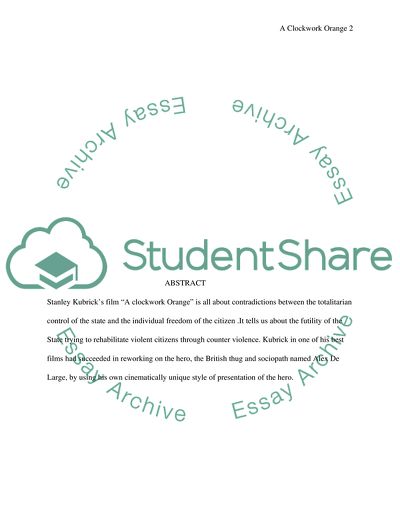Cite this document
(Stanley Kubricks Clockwork Orange - A Critical Appreciation Movie Review, n.d.)
Stanley Kubricks Clockwork Orange - A Critical Appreciation Movie Review. Retrieved from https://studentshare.org/visual-arts-film-studies/1560120-a-clockwork-orange-movie-write-a-critique-police-science-class
Stanley Kubricks Clockwork Orange - A Critical Appreciation Movie Review. Retrieved from https://studentshare.org/visual-arts-film-studies/1560120-a-clockwork-orange-movie-write-a-critique-police-science-class
(Stanley Kubricks Clockwork Orange - A Critical Appreciation Movie Review)
Stanley Kubricks Clockwork Orange - A Critical Appreciation Movie Review. https://studentshare.org/visual-arts-film-studies/1560120-a-clockwork-orange-movie-write-a-critique-police-science-class.
Stanley Kubricks Clockwork Orange - A Critical Appreciation Movie Review. https://studentshare.org/visual-arts-film-studies/1560120-a-clockwork-orange-movie-write-a-critique-police-science-class.
“Stanley Kubricks Clockwork Orange - A Critical Appreciation Movie Review”, n.d. https://studentshare.org/visual-arts-film-studies/1560120-a-clockwork-orange-movie-write-a-critique-police-science-class.


